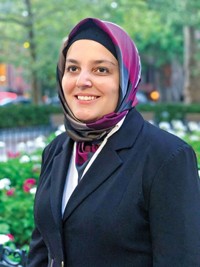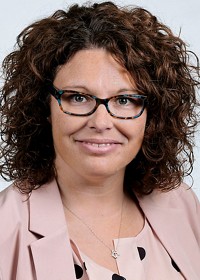Advertisement
Grab your lab coat. Let's get started
Welcome!
Welcome!
Create an account below to get 6 C&EN articles per month, receive newsletters and more - all free.
It seems this is your first time logging in online. Please enter the following information to continue.
As an ACS member you automatically get access to this site. All we need is few more details to create your reading experience.
Not you? Sign in with a different account.
Not you? Sign in with a different account.
ERROR 1
ERROR 1
ERROR 2
ERROR 2
ERROR 2
ERROR 2
ERROR 2
Password and Confirm password must match.
If you have an ACS member number, please enter it here so we can link this account to your membership. (optional)
ERROR 2
ACS values your privacy. By submitting your information, you are gaining access to C&EN and subscribing to our weekly newsletter. We use the information you provide to make your reading experience better, and we will never sell your data to third party members.
Careers
Not A Disability, But A Unique Ability
Chemists with disabilities share their stories on overcoming challenges in the workplace
by Linda Wang
November 18, 2015
| A version of this story appeared in
Volume 93, Issue 45
This year marks the 25th anniversary of the Americans with Disabilities Act, as well as the 35th anniversary of the American Chemical Society’s Committee on Chemists with Disabilities, which was formed in 1980 as the Committee on the Handicapped to facilitate educational and employment opportunities for people with disabilities in the chemical sciences.
To mark these milestone anniversaries, C&EN asked several chemists with disabilities to reflect on their experiences in the workplace.

“I am a deaf flavor chemist. When you lose a sense, all of your other senses are far more acute. So, as a result of my disability, my sense of taste is profoundly more acute than most people’s. This is a huge competitive advantage. I can taste flavor changes and modifications far more sensitively than others, and this allows me to figure out problems and solutions on a much faster timeline. I think the biggest change or adaptation of all that has enabled me to succeed in my field is the transformation of how others who are not disabled are beginning to view those with disabilities for their ability.”

“Most people have ball-and-socket joints in their shoulders; I don’t. I have limited motion in both arms. Because I don’t have a real joint, I can’t sit the way most people sit. When I first started working at FDA, my fingers were hurting, my back was hurting, everything was hurting, and so I went to my supervisor and asked if I could get an ergonomic evaluation. They didn’t ask any questions, they just said, ‘Whatever you need.’ It made me feel good that the times are changing. When you think back 25 to 30 years ago, it was, ‘Do the best you can,’ and that’s assuming they hired you in the first place.”

“A disability is not always obvious. I have a speech disability. Years after completing my postdoc, it was nearly impossible to make a presentation at scientific meetings without stuttering in every sentence. I realized that, fair or not, my inability to speak one-on-one, and especially in public, was limiting my career. Nearly two decades of participation in Toastmasters, a group to help improve public speaking skills, enabled me to better understand communication and improve my speaking skills. I’ve won awards for the quality of my presentations, and that’s because I put a lot more effort into making a presentation than most people do. Now, I’m a scientific liaison, so a lot of what I do deals with communicating research and developing relationships with other scientists, scientific administrators, and organizations. Having a disability helped me develop perseverance and an appreciation for small but steady progress.”

“As a completely blind computational organic chemistry Ph.D. student, I rely on senses other than vision to obtain information. In my lab, we have developed and implemented numerous solutions that have enabled me to perform my research at a comparable level to my sighted peers. The most significant adaptation we use is a 3-D printer for printing complex organic structures that I am investigating computationally. With 3-D printing, I am able to hold key structures from my calculations and glean nearly the same information that my sighted peers obtain from looking at pictures of their calculated structures using a graphical user interface. Although I am excited and proud of the work we have done to make computational chemistry more accessible to the disabled community, I am well aware that much still needs to be done before chemistry is fully accessible to chemists with disabilities.”

“I broke my neck, C5–C6 incomplete spinal cord injury, freshman year of college while playing flag football. That was 1986. There have been a lot of advances over the years that are allowing increased access and participation by people with disabilities, but when it comes to full inclusion and full access to leadership opportunities at the best jobs and at the best schools, there’s still a lot of implicit resistance in the system. It’s not conscious bias; it’s unconscious bias.”





Join the conversation
Contact the reporter
Submit a Letter to the Editor for publication
Engage with us on Twitter